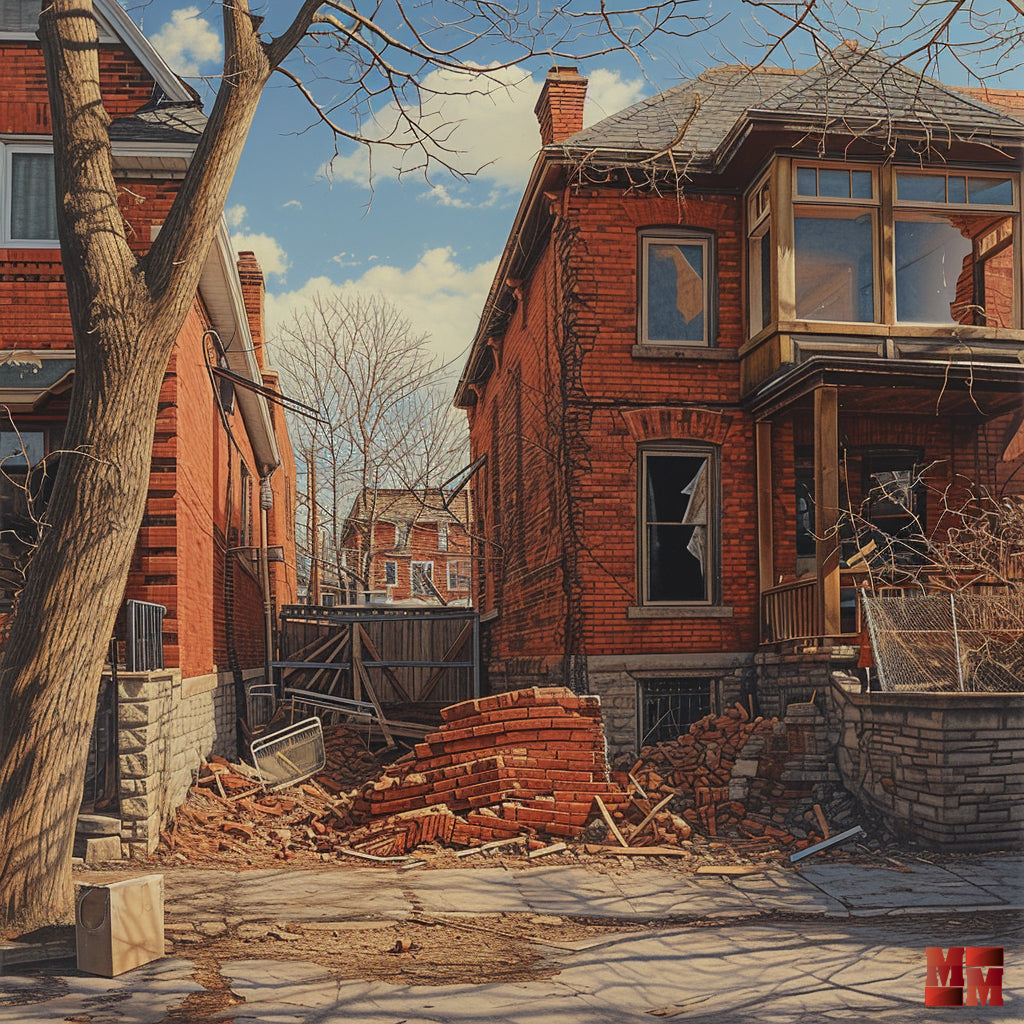How Can Nearby Construction Work Affect Brick Walls? A Comprehensive Guide
Impact of Construction Work on Brick Walls
In the dynamic urban setting of Montreal, Laval, and Longueuil, the preservation of masonry, and particularly brick walls, is a major concern for property owners. Construction work in the vicinity poses an often-underestimated risk to the structural and aesthetic integrity of these walls.
Vibrations and Their Effects
Vibrations are a key factor. Activities such as drilling, hammering, or even heavy traffic generate vibrations that travel through the ground and can reach the foundations of adjacent buildings. These vibrations, even if minimal, can lead to:
- Cracks in bricks and joints: Cracks often appear in brick walls due to these continuous vibrations.
- Weakening of the structure: Repeated vibrations can weaken the overall structure of the wall, necessitating reinforcement intervention.
Effects of Excavation Work
Excavation nearby can alter the soil balance, resulting in:
- Ground movements: These movements can cause differential settling of the foundations, leading to cracks and deformations.
- Risk of collapse: In extreme cases, excavation can compromise the structural integrity of a load-bearing wall.
Risks Linked to Increased Humidity
Humidity is another indirect effect of construction work. Excavations or changes in drainage can lead to increased moisture around foundations, causing:
- Material deterioration: Moisture can accelerate the deterioration of mortar joints and bricks.
- Mold and efflorescence issues: Water seeping into the walls creates conditions conducive to mold and efflorescence.
Pollution and Contamination
Construction work can also increase the atmospheric pollution around the building, impacting the masonry:
- Deposits of dirt and dust: These deposits can affect not only the aesthetics of the wall but also its long-term structural health.
- Chemical corrosion: Some pollutants can accelerate the corrosion of metal elements in the masonry, such as anchors and supports.
Prevention and Solutions
To counter these effects, a proactive approach is essential. Here are some effective strategies:
Regular Inspections
- Periodic assessment: A detailed inspection by professionals can identify early warning signs of damage.
- Monitoring evolution: Regular inspections allow tracking minor changes before they become major problems.
Protective Measures
- Barricades and scaffolding: Use these structures to protect walls from dust and debris.
- Shock absorption systems: Install equipment to reduce the impact of vibrations on structures.
Communication with Contractors
- Work coordination: Work closely with contractors to plan activities that might affect your property.
- Vibration monitoring: Require contractors to monitor and limit the vibrations generated by their work.
Preventive Maintenance
- Minor repairs: Promptly repair cracks and damaged joints to prevent further deterioration.
- Waterproofing: Apply treatments to protect the walls against moisture.
Conclusion
Nearby construction work poses a significant risk to brick walls, but with preventive measures and continuous vigilance, it is possible to minimize these effects. At Maçonnerie Montréal, we are dedicated to preserving your masonry heritage, providing expert solutions tailored to the urban challenges of Montreal, Laval, Longueuil, and their surrounding areas.

